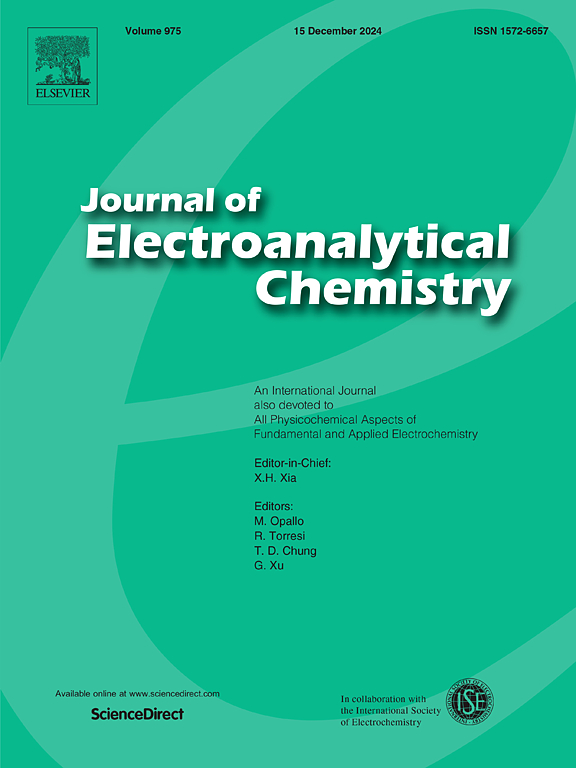Electrochemical conjugation of surface proteins for sensitive detection of breast cancer extracellular vesicles
IF 4.1
3区 化学
Q1 CHEMISTRY, ANALYTICAL
引用次数: 0
Abstract
Breast cancer extracellular vesicles (EVs) are rich in molecular information related to breast tumors and are thus considered valuable diagnostic biomarkers. Herein, we develop a new electrochemical method for the detection of breast cancer EVs. This method employs an aptamer to achieve specific capture of target EVs and then adopts a signal generation strategy that does not depend on the expression of specific EV surface proteins, thereby ensuring an efficient and reliable signal output. Specifically, this signal generation strategy, namely, the electrochemical conjugation of surface proteins, utilizes an electric potential to facilitate the conjugation of redox-active small molecules to the tyrosine residues of EV surface proteins, introducing a large number of reaction sites within minutes. Following this, methylene blue-loaded DNA nanospheres are integrated onto the surface of target EVs through click chemistry, producing a remarkable electrochemical response. Taking HER-2 positive breast cancer EVs as models, this method exhibits a wide linear range from 100 to 1 × 108 particles/mL, as well as good sensitivity with a detection limit of 65 particles/mL. Further validation using clinical samples from 5 healthy donors and 19 breast cancer patients reveals the practicality of this method in the diagnosis of HER-2 positive breast cancer. Therefore, we hope that this method can provide a valuable tool for detecting breast cancer EVs, and will have a broad application prospect based on the ubiquitous presence of tyrosine residues.

求助全文
约1分钟内获得全文
求助全文
来源期刊
CiteScore
7.80
自引率
6.70%
发文量
912
审稿时长
2.4 months
期刊介绍:
The Journal of Electroanalytical Chemistry is the foremost international journal devoted to the interdisciplinary subject of electrochemistry in all its aspects, theoretical as well as applied.
Electrochemistry is a wide ranging area that is in a state of continuous evolution. Rather than compiling a long list of topics covered by the Journal, the editors would like to draw particular attention to the key issues of novelty, topicality and quality. Papers should present new and interesting electrochemical science in a way that is accessible to the reader. The presentation and discussion should be at a level that is consistent with the international status of the Journal. Reports describing the application of well-established techniques to problems that are essentially technical will not be accepted. Similarly, papers that report observations but fail to provide adequate interpretation will be rejected by the Editors. Papers dealing with technical electrochemistry should be submitted to other specialist journals unless the authors can show that their work provides substantially new insights into electrochemical processes.

 求助内容:
求助内容: 应助结果提醒方式:
应助结果提醒方式:


